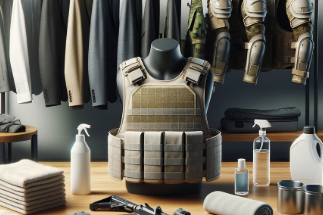26th Feb 2024
Essential Guide to Body Armor Care and Maintenance
Body armor, including various bulletproof vest levels, is an essential investment for individuals in high-risk professions and those seeking personal protection. To ensure your armor maintains its effectiveness, understanding the proper care and maintenance practices is crucial. This guide provides essential tips to help you maintain the integrity of your body armor at all levels of protection.
Understanding Your Body Armor
Familiarize yourself with the levels of body armor you own. Whether it's a Level II soft vest or a Level IV hard plate, each comes with specific maintenance needs. Knowing the body armor levels you possess will guide you in applying the correct care procedures, ensuring your gear remains in top condition to offer the protection it promises.
Routine Inspection
Conduct regular inspections of your body armor, regardless of its level. Look for signs of wear, such as fabric tears or plate cracks, which could compromise the vest's integrity. This is especially important for higher bulletproof vest levels, as they contain materials that are subject to degradation over time.
Cleaning Your Body Armor
Maintaining cleanliness is vital across all levels of body armor. Follow these steps to ensure your gear remains effective and hygienic:
- Remove Ballistic Panels: Always extract the ballistic panels from their carrier. These panels, especially in higher body armor levels, should not be submerged or exposed to harsh cleaning agents.
- Carrier Care: Use gentle detergents to clean the carrier. The cleaning method may vary slightly depending on the bulletproof vest level, but generally, a mild soap and water solution is safe for most carriers.
- Panel Maintenance: For all levels of body armor, use a damp cloth to clean the panels. Avoid chemical cleaners, particularly for higher-level armor, as they can degrade the protective materials.
Proper Storage
Ensure the storage area is free from moisture and direct sunlight, which can degrade the materials more rapidly. Storing the panels flat and hanging the carrier can prevent deformities, ensuring the vest maintains its protective qualities.
Regular Replacement
Understand that all levels of body armor have a lifespan. The materials in a Level IIIA vest degrade differently than those in a Level II vest, but all types will need eventual replacement to ensure the highest standard of protection.
Conclusion
Caring for your body armor is crucial, regardless of the bulletproof vest levels you own. Regular maintenance, proper cleaning, and adherence to storage guidelines are essential practices to extend the life of your gear. By maintaining your body armor properly, you ensure that it will offer the maximum level of protection whenever you need it.

